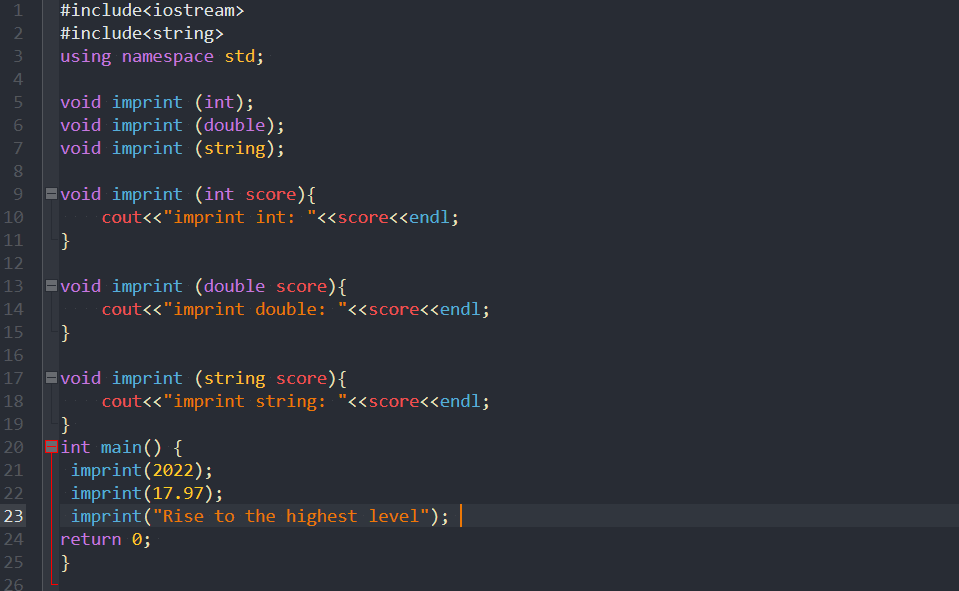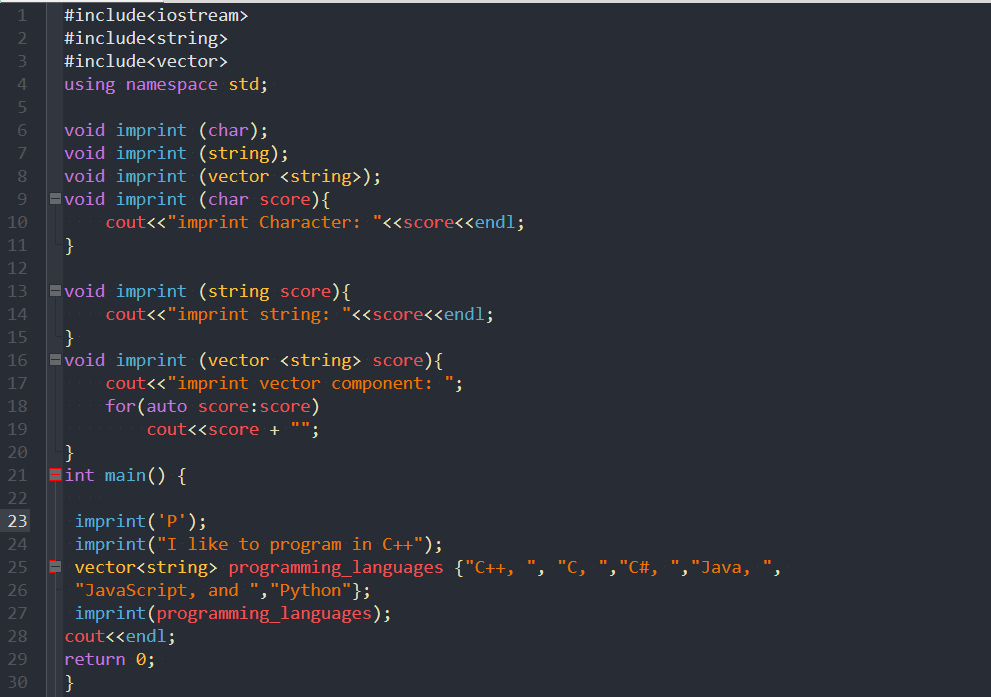Introduction
The C++ language has many features that can be used to overload the function. Function overloading is the process of using the same name to define different functions with different parameters.
These functions are declared as distinct entities, and they all have different definitions, but their names are the same.
C++ Overloading Function
What is a C++ overloading function?
C++ allows overloading functions with the same name but different parameters. This is called overloading functions in C++.
The compiler determines which version of the function to call based on the parameter types it receives at compile time. In brief C++ overloading, functions have different parameters for the same name in the same program.
Overloading Function and polymorphism in C++
The most common way of implementing polymorphism in C++ is through function overloading. In this scenario, the same function name can be used with different parameter lists to produce different behaviors. This allows a single function to behave differently depending on which parameters are passed into it.
C++ Overloading Function examples
Example 1
 imprint function behaves as an int the first time.imprint function behaves as a double the second time.imprint function acts as a string the third time.
imprint function behaves as an int the first time.imprint function behaves as a double the second time.imprint function acts as a string the third time.
The code of the program
#include<iostream>#include<string>using namespace std; void imprint (int);void imprint (double);void imprint (string);void imprint (int score){cout<<“imprint int: “<<score<<endl;}void imprint (double score){cout<<“imprint double: “<<score<<endl;}void imprint (string score){cout<<“imprint string: “<<score<<endl;} int main() {imprint(2022);imprint(17.97);imprint(“Rise to the highest level”); return 0; }
The output of the program

Example 2
 imprint function behaves as a char the first time.imprint function acts as a string the second time.imprint function behaves as a vector string the third time.
imprint function behaves as a char the first time.imprint function acts as a string the second time.imprint function behaves as a vector string the third time.
The code of the program
#include<iostream>#include<string>#include<vector>using namespace std; void imprint (char);void imprint (string);void imprint (vector <string>);void imprint (char score){cout<<“imprint Character: “<<score<<endl;}void imprint (string score){cout<<“imprint string: “<<score<<endl;} void imprint (vector <string> score){cout<<“imprint vector component: “;for(auto score:score)cout<<score + “”;}int main() {imprint(‘P’);imprint(“I like to program in C++”);vector<string> programming_languages {“C++, “, “C, “,”C#, “,”Java, “, “JavaScript, and “,”Python”};imprint(programming_languages);cout<<endl;return 0; }
The output of the program

Example 3

 imprint function programming behaves as an int the first time.imprint function behaves as a double the second time.imprint function behaves as a char the third time.imprint function acts as a string the fifth time.imprint function behaves as a vector string the third time.
imprint function programming behaves as an int the first time.imprint function behaves as a double the second time.imprint function behaves as a char the third time.imprint function acts as a string the fifth time.imprint function behaves as a vector string the third time.
The code of the program
#include<iostream>#include<string>#include<vector>using namespace std; void imprint (int);void imprint (double);void imprint (char);void imprint (string);void imprint (vector <string>);void imprint (int score){cout<<“imprint int: “<<score<<endl;}void imprint (double score){cout<<“imprint double: “<<score<<endl;}void imprint (char score){cout<<“imprint double: “<<score<<endl;}void imprint (string score){cout<<“imprint string: “<<score<<endl;} void imprint (vector <string> score){cout<<“imprint vector of strings: “;for(auto score:score)cout<<score + “”;}int main() {imprint(2022);imprint(17.97);imprint(‘A’);imprint(“Rise to the highest level”); vector<string> programming_languages {“C++, “, “C, “,”C#, “,”Java, “, “JavaScript, and “,”Python”};imprint(programming_languages);cout<<endl;return 0; }
The output of the program

Conclusion
 There are many reasons why programmers overload a function. They might be trying to make the code more readable, or they might be trying to optimize the function.
There are many reasons why programmers overload a function. They might be trying to make the code more readable, or they might be trying to optimize the function.
